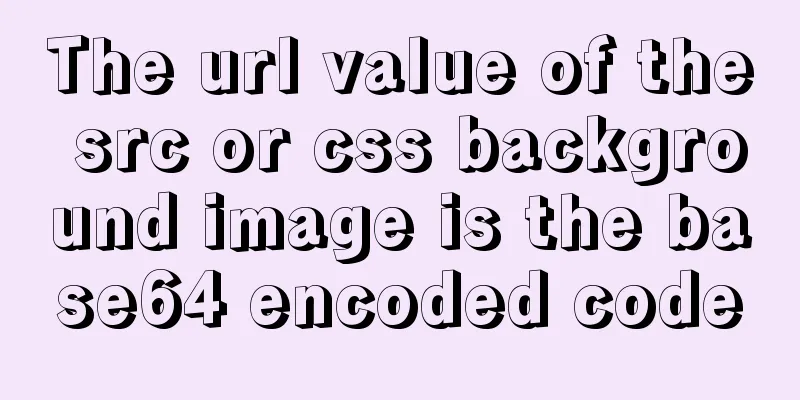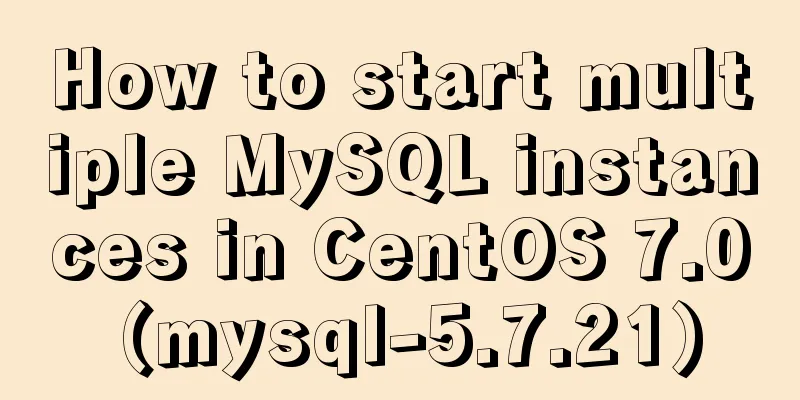The url value of the src or css background image is the base64 encoded code

|
You may have noticed that the src or CSS background image URLs of some images on the web are followed by a long string of characters, such as: data:image/png;base64, iVBORw0KGgoAAAANSUhEUgnZVJlYWR5ccllPAAAAHhJREFUeNo8zjsOxCAMBFB/KEAUFFR0Cbng3nQPw68ArZdAlOZppPFIBhH5EAB8b+Tlt9MYQ6i1BuqFaq1CKSVcxZ2Acs6406KUgpt5/KuVgz5BDCSZO99ZOdcZGvt4mJjzMVKqcha68iIePB86GAiOv8CDADlIUQBs7MD3wAAAABJRU5ErkJggg%3D%3D. So what is this? This is the Data URI scheme. The Data URI scheme is defined in RFC2397. Its purpose is to embed some small data directly into a web page without having to load it from an external file. For example, the string of characters above is actually a small picture. Copy and paste these characters into the address bar of Firefox and go to it, then you can see it, a 1X36 white and gray png picture. In the above Data URI, data represents the protocol name for obtaining data, image/png is the data type name, base64 is the data encoding method, and the data after the comma is the base64-encoded data of the image/png file. Currently, the Data URI scheme supports the following types: data: text data data:text/plain,text data data:text/html,HTML code data:text/html;base64, base64-encoded HTML code data:text/css,CSS code data:text/css;base64, base64-encoded CSS code data:text/javascript,Javascript code data:text/javascript;base64, base64-encoded Javascript code data:image/gif;base64, base64-encoded gif image data data:image/png;base64, base64-encoded png image data data:image/jpeg;base64, base64-encoded jpeg image data data:image/x-icon;base64, base64-encoded icon image data Simply put, base64 translates some 8-bit data into standard ASCII characters. There are many free base64 encoding and decoding tools on the Internet. In PHP, you can use the base64_encode() function to encode, such as echo base64_encode(file_get_contents('wg.png')); Currently, IE8, Firfox, Chrome, and Opera browsers all support this type of small file embedding. Take an example of a picture: A picture on a web page can be displayed like this: <img src="upload/2022/web/wg.png"/> It can also be displayed like this: Copy code The code is as follows:<img src="data:image/png;base64,iVBORw0KGgoAAAANSUhEUgAAAAEAAAAkCAYAAABIdFAMAAAAGXRFWHRTb2Z0d2FyZQBBZG9iZSBJbWFnZVJlYWR5ccllPAAAAHhJREFUeNo8zjsOxCAMBFB/KEAUFFR0Cbng3nQPw68ArZdAlOZppPFIBhH5EAB8b+Tlt9MYQ6i1BuqFaq1CKSVcxZ2Acs6406KUgpt5/LCKuVgz5BDCSb13ZO99ZOdcZGvt4mJjzMVKqcha68iIePB86GAiOv8CDADlIUQBs7MD3wAAAABJRU5ErkJggg%3D%3D"/> We write the content of the image file directly into the HTML file. The advantage of this is that it saves an HTTP request. The downside is that the browser will not cache such images. You can make free choices based on the actual situation. |
<<: How to modify Flash SWF files in web pages
Recommend
Talking about the practical application of html mailto (email)
As we all know, mailto is a very practical HTML ta...
Implementation of crawler Scrapy image created by dockerfile based on alpine
1. Download the alpine image [root@DockerBrian ~]...
How to remove the dotted border when clicking a link in FireFox
I encountered several browser compatibility issue...
10 issues that must be considered when designing and building large-scale website architecture
We are not discussing PHP, JSP or .NET environmen...
TypeScript decorator definition
Table of contents 1. Concept 1.1 Definition 1.2 D...
Detailed explanation of the group by statement in MySQL database group query
1: Statement order of grouping function 1 SELECT ...
Slot arrangement and usage analysis in Vue
The operating environment of this tutorial: Windo...
Linux implements automatic and scheduled backup of MySQL database every day
Overview Backup is the basis of disaster recovery...
setup+ref+reactive implements vue3 responsiveness
Setup is used to write combined APIs. The interna...
Detailed explanation of the wonderful CSS attribute MASK
This article will introduce a very interesting at...
Zen coding resource update function enhancement
Official website: http://code.google.com/p/zen-cod...
Javascript uses the integrity attribute for security verification
Table of contents 1. Import files using script ta...
Basic knowledge of website design: newbies please read this
Now many people are joining the ranks of website ...
Example code for converting html table data to Json format
The javascript function for converting <table&g...
Detailed process of NTP server configuration under Linux
Table of contents 1. Environment Configuration 1....









